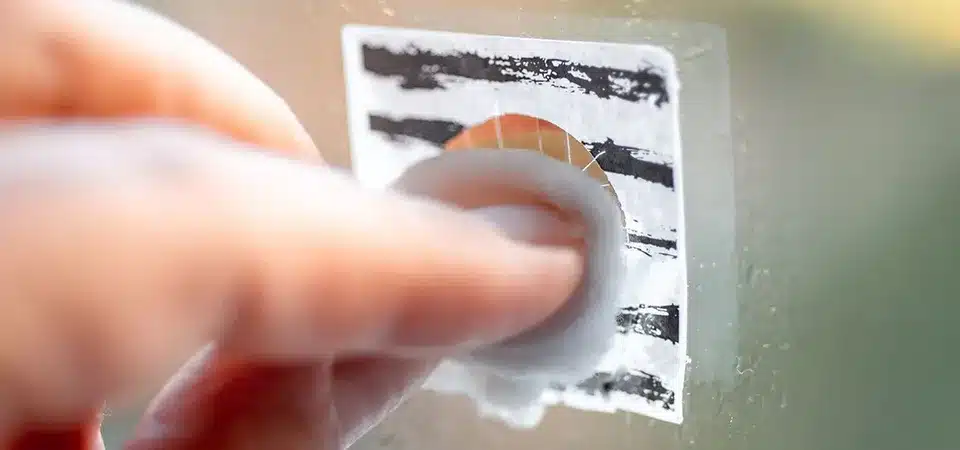What is Digital Printing?
Digital printing is a printing technology that directly transfers images or text from electronic files onto paper or other materials. Unlike traditional printing methods such as offset printing, digital printing doesn’t require the creation of printing plates. Instead, it directly outputs from computer files, making it ideal for small runs, highly personalized, or on-demand production.
At its core, digital printing involves transmitting the design content generated by a computer to the printing device. The printer then uses its print head or laser beams to apply ink or toner to the surface of the paper. Modern digital printing technology encompasses various techniques such as inkjet printing, laser printing, thermal transfer, and UV printing.
With continuous advancements in technology, digital printing has made significant strides in quality, speed, cost control, and environmental impact, making it an indispensable force in today’s printing industry.
Digital Printing vs. Offset Printing
Offset Printing
Offset printing is a traditional method that involves creating printing plates, transferring ink onto the plates, and then transferring it onto paper or other materials. This method is particularly suited for large-volume production, offering exceptional precision and color consistency.

Key Advantages:
- Cost-Effective for Large Runs: Ideal for high-volume printing where unit costs drop significantly with scale.
- High Output Quality: Produces detailed and consistent color prints, perfect for high-quality, mass-produced images.
- Consistency Over Long Runs: Maintains consistent output for long production runs, making it efficient over time.
However, offset printing also has its limitations. It requires significant setup time and costs for small-batch printing or customized orders. For smaller businesses or customized needs, the upfront costs and the time spent preparing plates make it less accessible.
Digital Printing
Digital printing eliminates the need for printing plates and directly controls the printing process using digital files. The main advantages of digital printing lie in its flexibility and its ability to handle small runs or highly customized printing tasks.

Key Advantages:
- Perfect for Small Runs and On-Demand Printing: Ideal for highly personalized or small-batch projects.
- Lower Upfront Costs: Does not require plate setup or extensive preparation, making it more affordable for smaller jobs.
- Quick Turnaround: Fast production times allow printers to quickly respond to market demands, saving time and increasing efficiency.
While digital printing might fall short in terms of color consistency and high-volume production efficiency compared to offset printing, its flexibility, rapid response time, and ability to accommodate custom orders give it a strong foothold in today’s print market.
Types of Digital Printing Methods
1. Inkjet Printing
Inkjet printing is one of the most common digital printing technologies, where tiny droplets of ink are sprayed onto paper by an inkjet print head. Inkjet printing is widely used in both home and commercial settings, particularly for applications requiring high-quality image output, such as photo printing and fine art reproduction.
Advantages:
- Capable of printing extremely fine details and rich colors.
- Can handle a wide range of paper types, including glossy paper, plain paper, card stock, and fabrics.
Disadvantages:
- Slower printing speeds, especially when handling large print volumes.
- Inkjet printers typically require more maintenance and higher ink replacement costs.
2. Laser Printing
Laser printing uses a laser beam to form an image on a thermally sensitive plate, which then transfers toner (usually powdered ink) onto the paper. Laser printing is widely used in office and commercial environments, especially for printing high-quality text and fine graphics.
Advantages:
- Faster printing speeds, making it ideal for high-volume production.
- Stable output quality, especially for text and graphics.
Disadvantages:
- Color reproduction is generally not as detailed as inkjet printing.
- The printer itself can be costly, and maintenance expenses are higher.
3. Thermal Transfer Printing
Thermal transfer printing involves heating a ribbon to transfer ink onto the surface of a material. This method is commonly used for printing labels and barcodes, especially when durable labels are required, such as industrial or asset tracking labels.
Advantages:
- Perfect for printing barcodes, QR codes, and other similar applications.
- High durability, making it ideal for labels that need to withstand long-term use.
Disadvantages:
- Not suitable for large-scale image printing.
- Requires regular ribbon replacement.
4. UV Printing
UV printing uses ultraviolet (UV) light to cure UV inks, allowing printing on a wide range of materials, including paper, plastic, metal, glass, and more. UV printing is known for its quick drying time and high durability, making it popular in industries such as advertising, packaging, and promotional product printing.
Advantages:
- Instant drying after printing, resulting in higher production efficiency.
- Capable of printing on a variety of materials, including non-porous surfaces like plastic, metal, and glass.
Disadvantages:
- Color reproduction might not be as accurate on certain materials. and packaged. Most kiss cut stickers are distributed in bulk to customers, companies, or businesses.
- Equipment and ink costs are generally higher compared to other printing methods.
Applications of Digital Printing
Digital printing is used across a wide range of industries. Here are some key application areas:
Commercial Printing
Digital printing is ideal for various commercial products, including brochures, posters, business cards, books, and magazines. Compared to traditional printing methods, digital printing has a clear advantage in short-run and customized printing, meeting the needs of small-batch production.

Personalized Customization
Digital printing plays a significant role in personalized customization. It is commonly used for custom T-shirts, personalized birthday cards, custom gifts, wedding invitations, and more. With digital printing, each item can be produced based on individual customer requirements, enhancing customer satisfaction by offering unique, one-of-a-kind products.
Packaging Printing
As demand for personalized and small-batch packaging grows, digital printing has become an essential solution. Digital printing can provide highly customized packaging products such as custom boxes, bags, labels, and more. This is particularly beneficial for industries like food and cosmetics, where small-batch production is increasingly in demand.
Label Printing
Digital printing is widely used in the production of labels and barcodes, offering efficient production of labels in various shapes and sizes. Thanks to its high precision and quick response, digital printing has become the preferred technology for label production in industries like retail and logistics.
Art Reproduction
Digital printing has found its niche in the art world, especially in high-quality reproduction of artwork. Through digital printing, artists can quickly produce high-quality replicas of their work and bring them to market.
Advantages of Digital Printing
Digital printing offers a range of advantages over traditional printing methods, particularly in the following areas:
Low Initial Investment
One of the major advantages of digital printing is its relatively low initial investment. Traditional printing methods typically require the creation of plates, machine setup, and other preparation costs, which can be expensive. Digital printing, on the other hand, moves directly from digital files to printing, eliminating plate creation and saving both time and money.
Quick Response and Flexibility
Digital printing has a significant advantage in response time, especially for projects that require fast changes. Content can be quickly adjusted based on market demand, avoiding the setup and waiting time associated with traditional printing methods. This is especially effective for seasonal products, limited editions, and time-sensitive items.
High-Quality Output
Modern digital printing equipment offers excellent color reproduction and high-precision image printing. Many digital printers can even achieve results comparable to traditional offset printing, particularly for fine details in image and photo printing.
Personalization and Customization
Digital printing allows for personalized services based on each customer’s needs, with each printed product potentially being unique. This advantage makes digital printing especially strong in the fields of customization and on-demand production.
Environmentally Friendly
Digital printing reduces waste and chemical usage, avoiding the common chemical waste and water issues seen in traditional printing. Additionally, digital printers typically have lower energy consumption and generate less pollution, making them more in line with current environmental standards.

How Digital Printing Works
The process of digital printing can be summarized as a “from file to print” process. Here are the detailed steps:
Design Preparation
First, designers use computer-aided design (CAD) software or image editing software (such as Adobe Photoshop, Illustrator) to create the print files.
File Transfer
The design files are electronically transmitted to the digital printer, typically using a USB drive, network connection, or direct link.
Printing Process
The printer uses the transmitted data to apply ink or toner to the printing surface via inkjet, laser, or other methods.
Post-Processing
After printing, the items are cut, folded, bound, or perforated as needed to meet specifications, ensuring the final product is finished correctly.
Quality Control
Digital printers often come equipped with automatic quality inspection systems to ensure that every print meets the required standard and to avoid defects or deviations.

What is Needed for Digital Printing?
To engage in digital printing, the following resources are required:
Hardware
This includes printers, scanners, and computers. Choosing the right printer based on production needs is crucial. For example, inkjet printers are great for detailed image outputs, while laser printers are better for high-volume text printing.
Software Tools
Design and layout software such as Adobe Photoshop, Illustrator, as well as printer drivers and color management software are necessary for ensuring accurate color reproduction and proper printing settings.
Consumables
Consumables include ink, paper, ribbons, thermal transfer media, and more. Different materials and media can impact both print quality and production costs.
Technical Support
Operators must have some technical knowledge and experience to ensure that the equipment runs smoothly and to handle any issues that may arise.

How to Get Started with Digital Printing
For those looking to start using digital printing, here are the steps to take:
Identify Your Needs
Clarify your printing requirements, such as whether you need large-volume production, customized small-batch printing, or art reproduction.
Choose the Right Equipment
Select the appropriate digital printing equipment based on your needs. There are many types of printers available, and prices and performance can vary significantly.
Train Operators
Ensure that operators are familiar with using the printing equipment and the related design and layout software.
Conduct Small-Scale Tests
Before starting large-scale production, perform small-scale tests to ensure the quality and stability of the equipment.
Optimize Production Workflow
Based on feedback from actual production, continuously optimize the workflow to improve efficiency and reduce costs.

Final Thoughts
With its flexibility, low cost, high quality, and environmental benefits, digital printing has become a vital part of the modern printing industry. Whether for commercial printing, personalized customization, or art reproduction, digital printing offers unprecedented choices for both businesses and individuals. As technology continues to advance, digital printing will reveal even greater potential and applications. If you're considering entering the digital printing field, understanding its workflow, equipment needs, and industry trends will help you better seize opportunities.
FAQ
What are the main differences between digital printing and traditional printing (offset printing)?
The key difference between digital printing and offset printing lies in the production process. Offset printing requires the creation of plates to transfer images onto paper, making it suitable for high-volume production. Digital printing, on the other hand, directly controls the printing process from computer files, eliminating the need for plates. This makes digital printing ideal for small runs and personalized print jobs. Digital printing is more responsive, cost-effective, and better suited for on-demand production.
Is digital printing suitable for large-scale production?
Digital printing is more suited for small-batch production, particularly for customized and personalized needs. For large-volume production, traditional methods like offset printing might offer cost advantages because the per-unit cost of digital printing can be higher in bulk runs. However, with advancements in digital printing technology, the efficiency and output quality of some high-performance digital printers have improved, making them suitable for medium-scale production as well.
What are the main advantages of digital printing?
- Low Initial Investment: No plate-making costs, making it perfect for small batches and on-demand production.
- Flexibility: Quick adjustments to designs, text, or other content, catering to customer-specific needs.
- Shorter Turnaround Time: A faster production cycle from design to final product, allowing quick responses to market demands.
- High-Quality Output: Modern digital printers offer high-precision, high-quality image and text output.
- Eco-Friendly: Reduced waste and chemical usage, making it more environmentally friendly than traditional methods.
How is the quality of digital printing?
Modern digital printing technology provides quality that can rival traditional methods, particularly in terms of image and color accuracy. Some digital printers achieve high-resolution and fine-detail results. However, certain digital printers may not match offset printing in mass text production or color consistency. Nevertheless, digital printing typically meets high standards for personalized and small-batch runs.
What are common applications of digital printing?
Digital printing is used across a variety of industries, including:
- Commercial Printing: Brochures, business cards, posters, magazines, etc.
- Personalized Products: Custom T-shirts, gifts, home décor, etc.
- Packaging Printing: Especially well-suited for small-batch, customized packaging.
- Label Printing: Barcodes, QR codes, product labels, etc.
- Art Reproduction: High-quality reproduction of artwork and photographs.
What equipment and materials are needed for digital printing?
To perform digital printing, you will need the following equipment and materials:
- Hardware: Digital printers (inkjet, laser, UV printers), computers, scanners, etc.
- Software: Design software (like Adobe Photoshop, Illustrator) for file creation, color management software to ensure consistency.
- Consumables: Ink, paper, ribbons, heat transfer media, etc. Different printers require different types of consumables.
- Technical Support: Operators need technical skills to operate and maintain the equipment properly.
How much does digital printing cost?
The cost structure for digital printing is relatively flexible. There are no plate-making costs, making it ideal for small-batch and on-demand production. For small runs, digital printing generally has a higher per-unit cost, but it’s ideal for customized orders. For large-volume printing, traditional methods like offset printing tend to have lower per-unit costs, making them more cost-effective for large-scale production.
How fast is digital printing?
Digital printing is generally quite fast, especially for small batches and customized production. The printing speed depends on the printer model, type of media, and complexity of the design. High-performance digital printers can achieve quick production times without the need for long setup processes.
Is digital printing environmentally friendly?
Yes, digital printing is typically more environmentally friendly than traditional printing methods. It reduces the use of chemicals and solvents, minimizing waste and water runoff. Additionally, because digital printing operates on an "on-demand" basis, it reduces overproduction and inventory buildup, leading to less resource waste.
What types of materials are suitable for digital printing?
Digital printing can be applied to a variety of materials, including:
- Paper: Standard paper, glossy paper, cardstock, etc.
- Plastic: Plastic bags, bottle labels, tags, etc.
- Textiles: T-shirts, hats, sportswear, etc.
- Metal, Wood, and Glass: Using UV printing technology, digital printing can also be applied to non-porous surfaces like metal, wood, and glass.
How does digital printing meet personalization needs?
A major strength of digital printing is its ability to enable personalization. Each print job can be modified or customized to meet specific customer needs, such as printing different names, dates, designs, or images. This flexibility makes digital printing particularly popular for personalized products like custom gifts, wedding invitations, and personalized T-shirts.
How durable is digital printing?
The durability of digital prints depends on the materials used and the type of ink. Modern digital printing typically uses high-quality inks and curing techniques (such as UV ink curing) to ensure strong weather resistance and longevity. UV printing, in particular, is excellent for outdoor products as it offers enhanced water resistance and UV protection after curing.
Can digital printing be used for high-quality image and photo printing?
Absolutely. Digital printing is capable of producing extremely fine and detailed images and photos, particularly with inkjet and UV printing technologies. Modern digital printers offer high-resolution outputs that retain rich details and accurate colors, making digital printing ideal for art reproduction and photo printing.
Is digital printing suitable for short-term projects or quick turnarounds?
Digital printing is perfect for short-term projects and quick turnarounds. Because there’s no plate preparation involved, and production can start immediately after order confirmation, digital printing allows for fast completion of print jobs and quick delivery. This makes it especially valuable for industries needing rapid responses to market demands.
How do I choose the right digital printer for my needs?
When selecting a digital printer, consider the following factors:
Customer Support: Choose a brand that offers good customer service and technical support to ensure reliable operation.
Printing Requirements: Do you need high-quality image output, or is speed your top priority?
Production Volume: Choose a small or large-format printer depending on your production scale.
Budget: Digital printers vary widely in price, so balance your budget with your actual needs.
Printer Features: Check the printer's speed, resolution, and compatibility with different materials.








